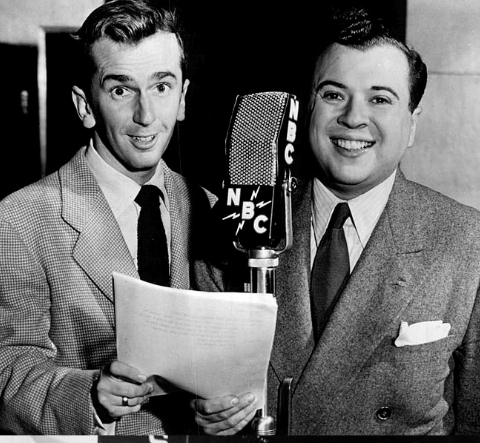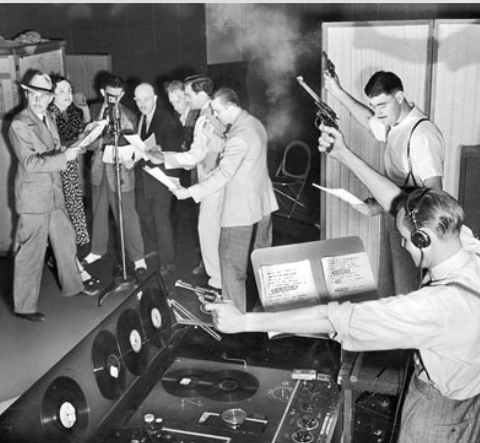
horror/supernatural tv show
By opening the grave of a recently deceased man and putting on his coat, a person will supposedly be granted invisibility. A bitter man with scores to settle decides to put the superstition to the test. He forces his reluctant butler to join him in his scheme of grave-robbing and murder.
TV:
In 1946, NBC Television brought the highly successful radio program Lights Out to TV in a series of four specials, broadcast live and produced by Fred Coe, who also contributed three of the scripts. NBC asked Cooper to write the script for the premiere, "First Person Singular", which is told entirely from the point of view of an unseen murderer who kills his obnoxious wife and winds up being executed. Variety gave this first episode a rave review ("undoubtedly one of the best dramatic shows yet seen on a television screen"), but Lights Out did not become a regular NBC-TV series until 1949.
Coe initially produced this second series but, for much of its run, the live 1949-1952 program was sponsored by appliance maker Admiral, produced by Herbert Bayard Swope, Jr., directed by Laurence Schwab, Jr., and hosted by Frank Gallop. Critical response was mixed but the program was successful for several seasons (sometimes appearing in the weekly lists of the ten most watched network shows) until competition from the massively popular sitcom I Love Lucy on CBS helped to kill it off.
The 1949-1952 series featured scripts by a variety of authors, including a young Ira Levin. In 1951, producer Swope even bought a few stories from Cooper and Oboler. "Dead Man's Coat," starring Basil Rathbone, was adapted from one of Cooper's 1930s plays (and not to be confused with his Quiet, Please episode "Wear the Dead Man's Coat" with which it shares a similar premise). Oboler's "And Adam Begot," adapted by Ernest Kinoy from a radio play, starred Kent Smith. Among the young actors employed was Leslie Nielsen, who appeared in several episodes including "The Lost Will of Dr. Rant," based on "The Tractate Middoth", an M. R. James story.
Other notable guest stars included Anne Bancroft, Grace Kelly, Eva Marie Saint, Lee J. Cobb, Anthony Quinn, Jessica Tandy, Veronica Lake, John Forsythe, Boris Karloff, Beatrice Straight, Eli Wallach, Vincent Price, Jane Wyatt, and Jack Palance.
Notable directors included Delbert Mann and Fred Coe.
Radio: If it was midnight Wednesday, the radio was tuned to NBC for Lights Out, a show that featured tales of the supernatural and the supernormal. It was the first of the horror/suspense radio shows, predating Inner Sanctum and Suspense.
At
first, the show was first written by Wyllis Cooper, he emphasized great sound effects and gripping stories. In 1936 Arch Oboler took over the writing and he brought the show through its huge successes. Hit stories like Cat Wife and Chicken Heart (and if you get a chance, listen to Bill Cosby’s comedy routine on the Chicken Heart, that may be what really got me into old time radio programs) still evoke memories today. The stories called for all sorts of horror: breaking bones, blood dripping, heads being severed, and who can forget human flesh being eaten. The glory of the show was that they had a sound effects team up to the challenge. But rather than actually kill people for the show, they experimented and found out that a soaked rag thrown against a wall sounded like a body slamming against pavement, maple syrup sounded like blood, and so on and so on. The stories are also notable for the chances that Oboler took, he played with first person narratives, stream of consciousness. In short, he pushed the envelope of what radio could deliver. The show had such a following that when NBC tried to cancel the show in 1937 fans protested in the hundreds and kept the show going. Similar to Star Trek in the 1960s.
Lights Out ran from 1934 through 1939. Then it went through several reboots, each less successful then the previous one. The last radio show aired in 1947.
You May Also Like
Lights Out Old Time Radio





